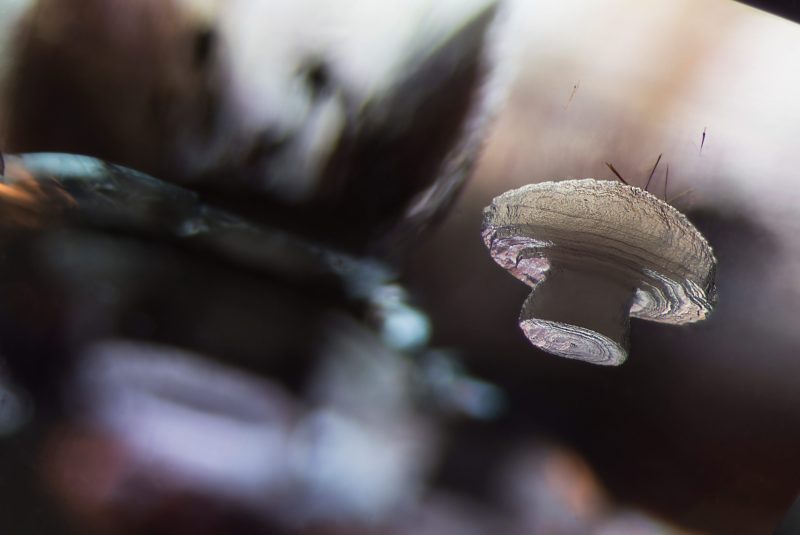What is the subject matter of your winning image and why did you choose this image?
A white, mushroom-shaped cristobalite crystal, which is suspended inside its quartz mineral host. I chose this image because I felt it is a good representation of how the field of gemology combines both art and science. While we study gems because of their beauty and rarity, we also use scientific techniques, particularly microscopy, to gain a deeper and more complete understanding of gems and minerals. When I saw this cristobalite crystal inside of quartz, my first thought was that it looks surprisingly similar to a mushroom. It is interesting to see how two such different creations of the natural world can so closely resemble each other.
What are the special techniques and/or challenges faced in creating this photomicrograph?
The first challenge in capturing this image was to align the mineral specimen at just the right angle so that the cristobalite inclusion would take on its mushroom shape. It was also important to get the lighting correct to illuminate the cristobalite crystal against its dark background. I used a combination of darkfield and carefully positioned diffuse fiber optic lights to achieve the desired effect for this image.
What is your primary line of work?
I am a gemologist at Lotus Gemology, a colored gemstone testing laboratory based in Bangkok, Thailand.
How long have you been taking photographs through a microscope? What first sparked your interest in photomicrography?
Approximately five years. I first became interested in photomicrography when I took gemology classes and started looking at gems through the microscope. When I looked at the internal world of gems, I felt like I was exploring a new frontier, and I wanted to share that with others through photomicrography.
Do you tend to focus your microscopy toward a specific subject matter or theme? If so, why?
I focus my microscopy on gemstone inclusions, which are the irregularities found inside gems. Microscopy can help gemologists learn a lot about gems, including whether they are natural or synthetic (man-made) and whether they have gone through any treatment, such as heat treatment. In some cases, it can even help us determine where in the world a gem was found.
Why did you enter the Nikon Small World Photomicrography competition? What do you think of the competition?
I entered this competition because I had seen previous years’ winners and was amazed and inspired by their stunning photomicrographs. I feel honored to be included among this talented group of people. Nikon has done a great job using this competition as a tool to promote microscopy and photomicrography, making what could otherwise be a niche field more accessible.


 Share
Share Tweet
Tweet Pin-It
Pin-It